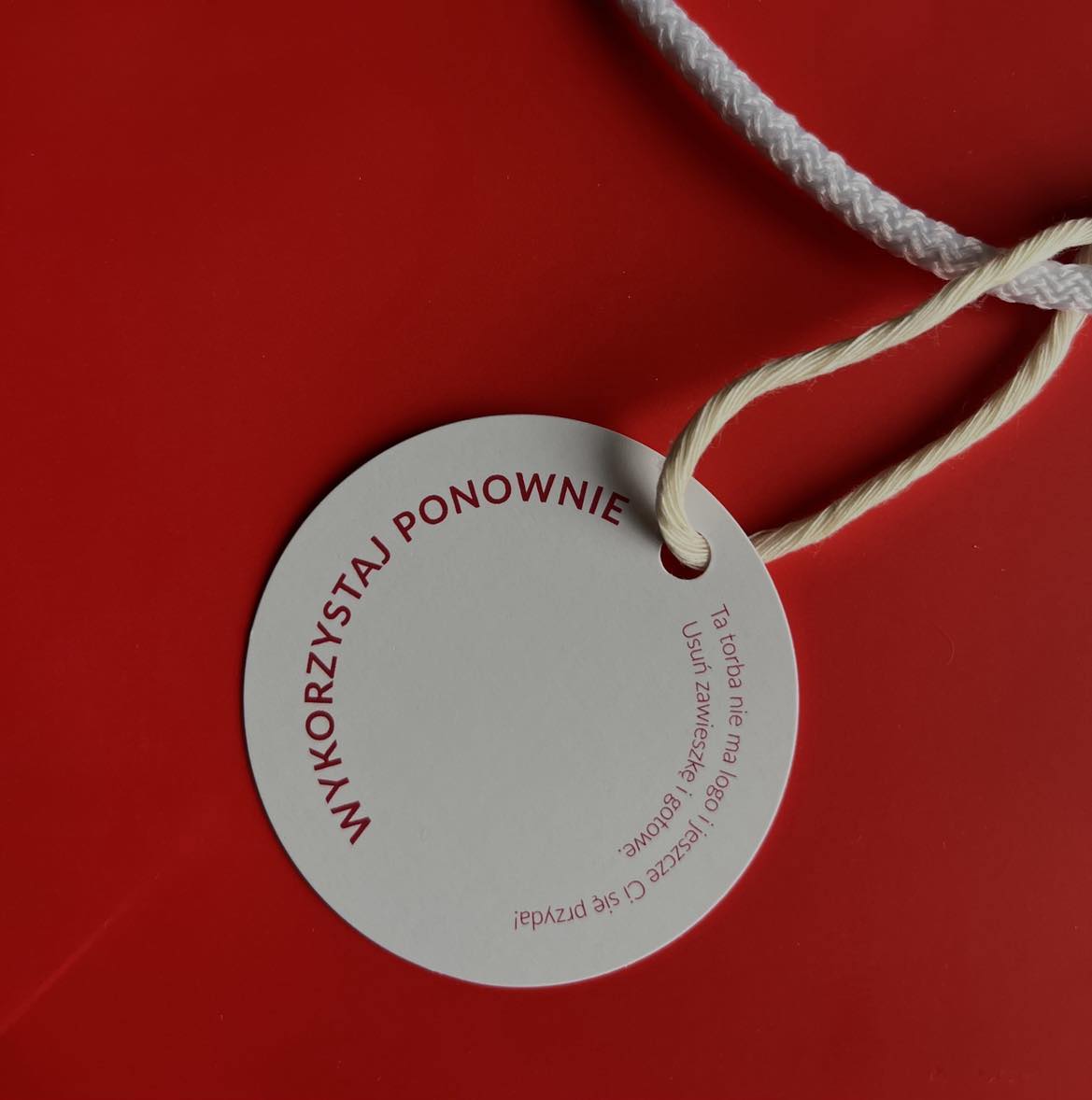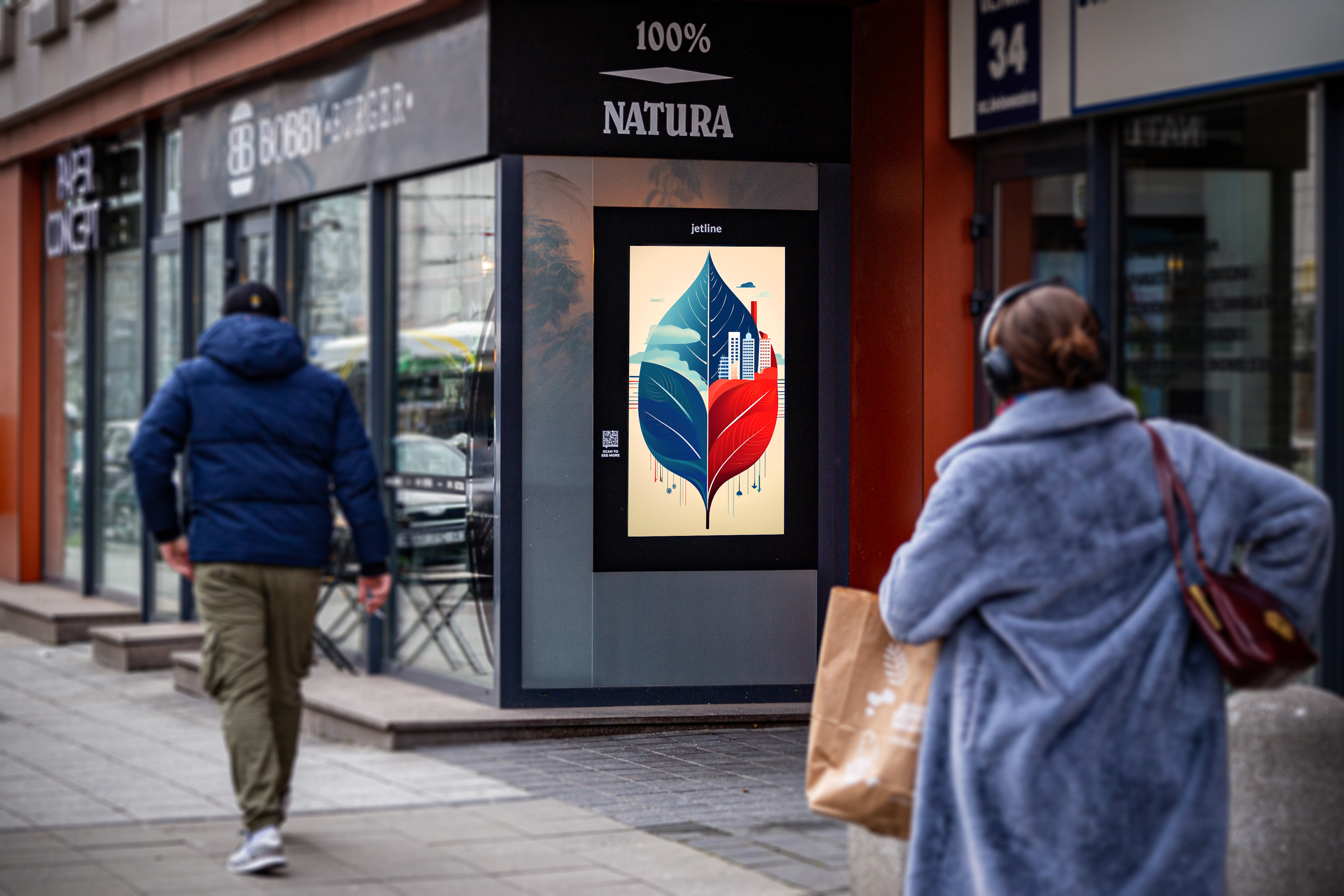With Us, You'll Learn about the Carbon Footprint of Campaigns on Motorway Billboards and MORE Screens
We have developed a tool for calculating the carbon footprint of advertising campaigns on classic Motorway 12x4 m billboards (OOH) and MORE digital screens (DOOH). These are the first such calculators for out-of-home advertising campaigns in Poland.
The calculators were developed using a "gate to grave" approach. They cover the campaign lifecycle from the perspective of its execution at Jet Line: from media production, through installation, operation, and transport, to monitoring and recycling. They provide information on the environmental impact of campaigns carried out in cooperation with us, which in turn enables decision-making and the initiation of compensatory actions.
The calculators are prepared by Envirly in close cooperation with us, based on the analysis of internal company processes and using indicators and factors generally accepted by national and international institutions. We introduced them because we believe that responsible advertising communication can be conducted starting with awareness, knowledge and transparency.
How Do We Calculate a Campaign's Carbon Footprint?
We have described and analyzed each stage of both campaign types (OOH and DOOH) in terms of CO2 emissions generated, depending on the specifics of the network.
- Season and campaign duration: campaigns on Motorway 12x4 m are carried out throughout the year. The duration of the campaign and the season have an impact on the total amount of emissions. Depending on needs, changes in decoration and decoration material may require different logistical activities.
- Advertising materials: we use paper or PVC (vinyl) banners provided by the client. The calculation does not include emissions related to the production of these materials; it focuses on logistics and use of media.
- Transportation and monitoring: we include team travel, installation monitoring, and delivery of advertising materials.
Elements affecting eCO₂ emissions:
- Power of lamps illuminating the poster
- Share of renewable energy used outside the energy mix
- Weight of decoration
DOOH campaigns on MORE screens involve digital media with an exposure area usually of 1 m². Advertisements are displayed on screens that operate from 6:00 AM to midnight. The broadcast time for a single spot is 10 seconds. The calculation does not include emissions related to the production of spots, which are typically prepared by the advertiser. We focus on advertising emissions, logistics, and network maintenance (service work, installation of new screens).
Elements affecting CO₂ emissions
- Electricity - MORE screens consume electricity at specific hours, and the emission level depends on the campaign duration;
- Transportation - all service work related to screens.
Carbon Footprint Calculators - a New Space for Communication
We create space for OOH and DOOH communication and help our clients tell their stories. Now we also help them respond to needs related to new regulations and non-financial reporting. But above all, we support them in measuring emissions from communication campaigns, gaining knowledge about environmental impact, and working on strategies to reduce and offset their own footprint. We invite all brands that ask questions with responsible curiosity and think outside the box!
First, Big Steps
Our approach to ESG is not the result of a short-term trend, but the outcome of many years of work toward ecological and social responsibility. We wrote about this in a Nowy Marketing article in 2020, and even then we were aware of how our actions impact the environment. This understanding opens up new possibilities for improving energy efficiency, minimizing resource consumption, and caring for ecology.
We have been measuring our own carbon footprint as an organization since 2022, using a calculator prepared by the Climate & Strategy Foundation. The latest emissions report covers the year 2023. The size of emissions in scopes 1 and 2 in 2023 decreased significantly compared to 2022, which is primarily related to the replacement of all lamps illuminating Motorway surfaces with energy-efficient LEDs.
We have reduced plastic use in office materials, have been choosing recycled paper for years, and have stopped using finishing treatments for printed materials. We designed wonderful paper gift bags that can be used multiple times (we've verified that it works!). Instead of producing promotional gadgets, we choose to give experiences: flowers, books, event tickets, and yes, sometimes wine. We pay attention to combining business trips to limit the number of journeys, and we choose trains whenever possible.

Sustainable development is a process that requires rational choices. We plan investments in ecological solutions, striving for even greater energy efficiency. We are following a path where we do something for ourselves and do something for others: we participate in change, respond to challenges, and above all, try to maintain environmental and social sensitivity.

